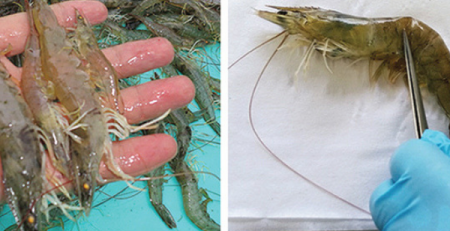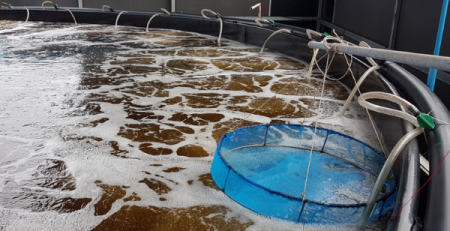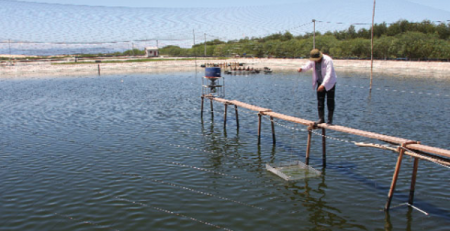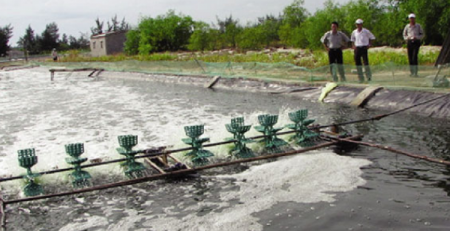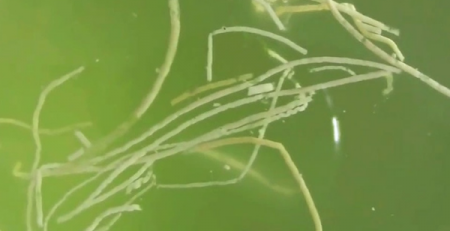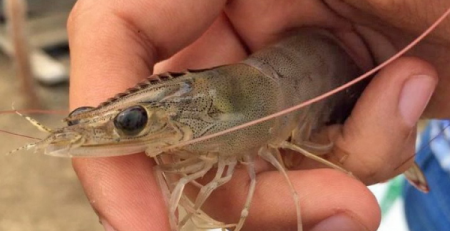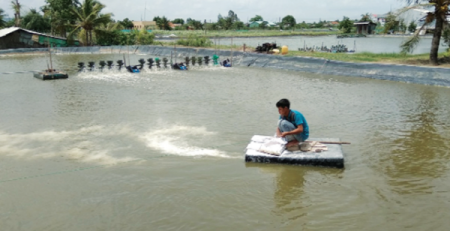Alternative materials in shrimp feed
Soybean meal can replace marine animal protein in shrimp diets but also cause many nutritional deficiencies. The good news is that there are many new ingredients that have higher nutritional value than traditional food ingredients from plants.

New sources of materials
Foods of plant origin need to be supplemented with essential nutrients such as cholesterol, amino acids and micro minerals to compensate for nutritional deficiencies from marine animal proteins. Camelina oil and genetically modified canola from microalgae and yeast can contain very high levels of DHA and EPA. Most microalgae oils contain high levels of DHA (17-28%). By 2020, some new oils will become more common ingredients in shrimp feed formulas. However, the biggest disadvantage of this material is the lack of cholesterol – the substance that shrimp cannot synthesize itself and still depends on external sources. Until now, the nutrition industry has only produced microalgae oil containing 32% DHA and 16% EPA but contains relatively low cholesterol content compared to fishmeal.
Soybean meal is still at the top of the list of plant proteins thanks to its advantages in supply, price and nutritional properties. Hydrolyzed soy protein is relatively good. Free amino acids, proteins and peptides in hydrolysis products have the ability to balance nutrition between soluble protein, attractiveness, appetite and nutritional function while reducing oxidative stress through properties is related to immunity.
Insects are another potential alternative source of feed ingredients. Insect food is primarily produced from a number of species that are fast growing, easy to reproduce and easily convert low-value organic waste into protein and fat with high nutritional value. Protein content can range from 30% to 80% in some insects with perfectly balanced amino acids. However, the total sulfur amino acid content is the biggest limitation of this material. Although high in fat, insect food does not contain n-3 LCPUFAs, unless insects are grown on this essential fat-rich substrate.
Similarly, unicellular proteins such as microbial biomass attract nutritionists’ attention due to rapid growth, high protein content and good immunity to climate impacts. Most single-cell protein studies have so far been developed on Methylobacterium extorquens due to their extremely fast properties on methane with essential amino acid content similar to soybeans but do not contain some anti-nutritional ingredients. .
Increase the value for shrimp feed
When nutrient inputs for growth and health are optimized, the next step is to find solutions to absorb and make the most of nutrients from new materials, such as boosters. Digestive strength. From here, new functional additives appear.
Bile salts are important for fat digestion in plants. However, they are not available in shrimp body but are essential for shrimp. First, bile salts are digestive enhancers thanks to emulsifying properties that contribute to improved digestion and fat utilization. Second, bile salts are also a nutritional additive because the steroidal acid structure in bile salts in the form of bile acids can replace cholesterol signaling molting.
In order to treat anti-nutritional factors such as phytate and non-starch polysaccharide (NSP), it is possible to use a bacterial phytate in shrimp feed to improve the efficacy of the mixture of phosphorous and phytate nitrogen. Carbohydrases are also considered alternative sources to enhance fat, protein and starch; as well as improve protein and energy metabolism. Recent studies have found that the combination of two types of carbohydrase, xylanases (XYL) and arabinofuranosidase (ABF), has improved total carbohydrase activity by more than 35%. Another study also showed that 50% of dried beans and 26% of whole wheat flour with 200 mg / kg enzyme additives positively improved energy and protein metabolism, weight gain and feed conversion (FCR ).
New oils contain more n-3 LCPUFAs but less cholesteriol so we still need other sources of cholesterol. We can improve digestion and take advantage of essential fats and provide a source of cholesterol replacement thanks to bile salts. Still, the search for alternative materials continues.
Cre: Thuy san Viet Nam


